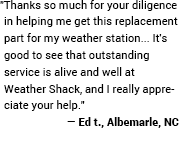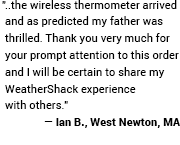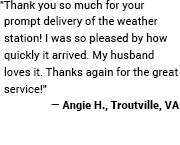
Wind Measurement
Instrument: Anemometer Wind is the natural motion of the air roughly parallel to the Earth's surface. It is caused by the unequal heating and cooling of the Earth and atmosphere by the sun, which produces differences in air pressure. As the atmosphere shifts air masses to equalize these differences wind is developed, tending to flow from areas of high pressure to areas of low pressure. Additional factors also come into play that can influence the wind speed and direction, such as Earth's rotation (Coriolis effect), the condensation of water vapor, the formation of clouds, friction over land and water, and others. Wind occurs at all scales. Global winds (trade winds), upper level winds (jet streams), synoptic winds (resulting from the pressure differences of surface air masses), local (mesoscale) winds (such as gust fronts), and winds that develop because of geographical features (like sea breezes). Winds also occur on a much smaller scale, for example dust devils or tornadoes. Wind observations are taken at a fixed location using two parameters: wind speed and wind direction. Referenced with respect to true North, the direction that the wind is flowing from is measured in degrees. It also described by the compass points it's flowing from (N, NE, NNE, etc.). Wind speed is a measurement of the speed of movement of the air, and is typically reported in miles per hour (mph) or kilometers per hour (kph). Reports for maritime and aeronautical operations may use those or knots (nautical miles per hour). |
Wind speed and direction is of general interest to most of us but for certain disciplines, including meteorology, aircraft and maritime operations, construction, civil engineering, and outdoor sports and recreation, wind information is of critical importance. Of course the high winds associated with severe thunderstorms and hurricanes are of critical importance to us all, as they can cause tremendous damage and loss of life. Wind speed and wind direction can be measured with a variety of tools. The most common, included with complete home weather stations, is the anemometer, which typically consists of a rotating vane to measure direction and a shaft with cups attached that spins with the wind to measure its speed. The Beaufort scale can also be used to assess wind speed, and it's commonly used in marine forecasts and weather observations. Most every airfield has a windsock, which provides pilots with information on wind direction and approximate wind speed. Similarly, wind vanes are used to indicate wind direction. And tornadoes are classified in six categories using the Fujita scale, which is based upon the resulting damage. All content on the WeatherShack Education Center is Copyright 2002-2020 WeatherShack.com. This material may not be reproduced, displayed, modified or distributed without the express prior written permission of WeatherShack.com. For permission, please contact [email protected]. |














